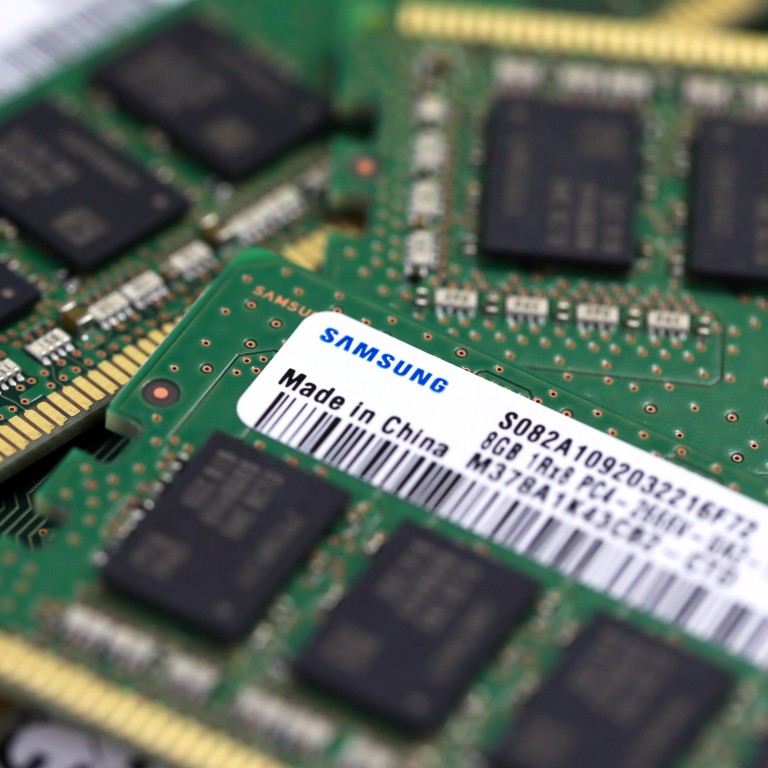
China’s trade pivot from US could be a boon for South Korea, Japan and Taiwan
- South Korea, Japan and Taiwan seen as likely economic winners as China turns away from reliance on US imports
- Asian hi-tech exporters expected to soak up demand from world‘s second largest economy as it looks to skirt sanctions
China’s effort to cut its reliance on US imports – especially for advanced technologies – by shifting demand to other Asia nations is likely to make big winners out of South Korea, Japan and Taiwan, analysts said.
China remains vulnerable to bottlenecks in cutting-edge computer chips and key components embedded with American intellectual property, something made apparent by US sanctions on Huawei Technologies Co. imposed by the Trump administration.
It is the first time China, South Korea and Japan have been part of the same free-trade pact, making it easier for China to purchase hi-tech goods with embedded research and development from its two neighbours as a way around US sanctions, analysts said.

03:29
RCEP: 15 Asia-Pacific countries sign world’s largest free-trade deal
“Japan and Korea get the best of both worlds,” said Rory Green, China and South Korea economist at brokerage TS Lombard, “They will benefit from greater China market access and, on the flip side, it’s now easier for them to invest into Southeast Asia and profit from cheaper production there.”
Shaun Roache, S&P Global Ratings’ chief economist for the Asia-Pacific region, said Japan and South Korea would generally be favoured for capital expenditure by firms in machinery and other capital goods that are needed to keep the trade cycle powering ahead into next year.
Reflecting their strong economic performance compared to the rest of the world in terms of export growth – and in China and Taiwan’s cases, their ability to control Covid-19 – the currencies of China, South Korea and Taiwan have risen sharply this year.
All Asian economies have rebounded from lows earlier in 2020 on the back of stronger trade, which has been resilient due to work-from-home demand for electronics and computers as a direct consequence of Covid-19, and since China‘s industrial sector remains reliant on foreign technology, Roache said.
While many of the electronics exports may be one-off purchases by consumers, the latest South Korean data suggests recovery is broadening, providing a good guide to the performance of exporters elsewhere in the region, said Alex Holmes, emerging Asia economist at consultancy Capital Economics.
In November, the value of South Korean exports rose further above pre-crisis levels to their highest level since September last year. Shipments of mobile phones, mobile phone equipment and semiconductors saw strong growth, while automobile exports rebounded after being one of the sectors hit hardest by the initial slump in global demand.
November’s trade data, combined with improving sentiment in the manufacturing sector and among businesses surveyed by the Bank of Korea, showed the country‘s strong recovery continued in the fourth quarter despite a third wave of the virus, Holmes said.
“Global demand for electronics remains elevated due to investment in data centres and 5G infrastructure,” he added.

05:02
Coronavirus backlash further fraying China’s ties to global economy
Paras Anand, chief investment officer for Asia-Pacific at Fidelity International, said a more robust regional economy was on the horizon because of broader factors at play, including higher trust in institutions and their ability to tackle crises following their management of the pandemic.
“[A] key trend that was already under way due to rising trade tensions is greater intraregional reliance,” Anand said. “The pandemic has only accelerated this phenomenon, with important parts of supply chains being brought closer to home in Asia, especially in China.”
TS Lombard’s Green said that several Asian economies including South Korea, Japan and Taiwan had to balance their reliance on China for their economic growth with their dependence on the US military for national security.

